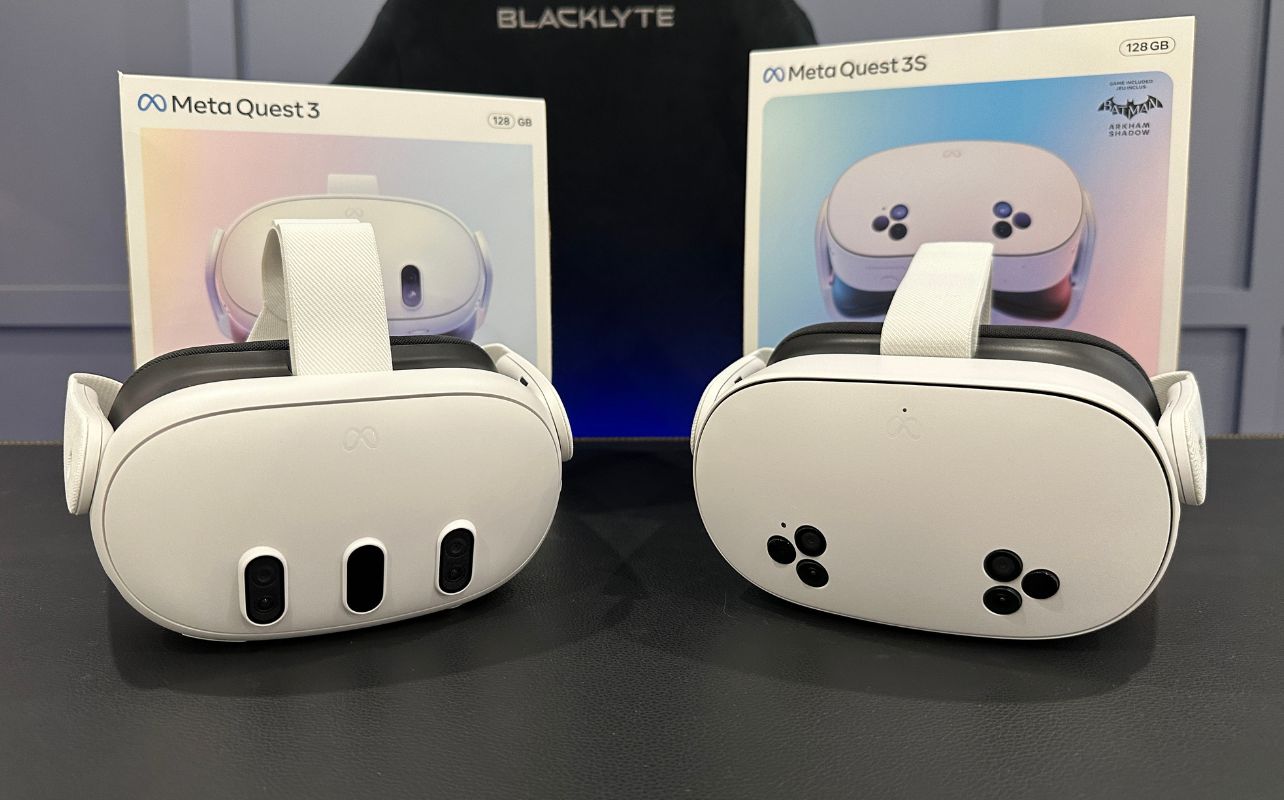
The Quest 3 and Quest 3S are the latest virtual reality headsets from Meta, offering the most refined VR experience yet. The two standalone devices make stepping into the world of VR, as well as augmented reality (AR) a snap. They continue the much-welcomed tradition of not requiring a PC or external sensors, giving you a more immersive and accessible experience in an all-in-one package.
As an avid VR and AR headset user, I have quite a bit of experience with the Quest 3. And I was excited to go hands-on with what Meta has brought to the table with its younger, more budget-friendly sibling, the Quest 3S. If you are looking to enter the virtual and augmented reality world, you should be aware that each piece of hardware has distinct differences. Let’s look at how the Quest 3 and Quest 3S stack up in design, performance, and features in my full review.
Unboxing the Meta Quest 3 and Quest 3S
Unboxing the Meta Quest 3 and Quest 3S is a straightforward experience. The fold-open package includes the headset, two controllers, and the accessories needed to get up and running. Everything is organized and marked sequentially, offering easy-to-follow steps to get set up. The weight between the two is negligible; The Quest 3 weighs 1.14 pounds (515 grams), and the Meta Quest 3S is slightly lighter at 1.13 pounds (514 grams).
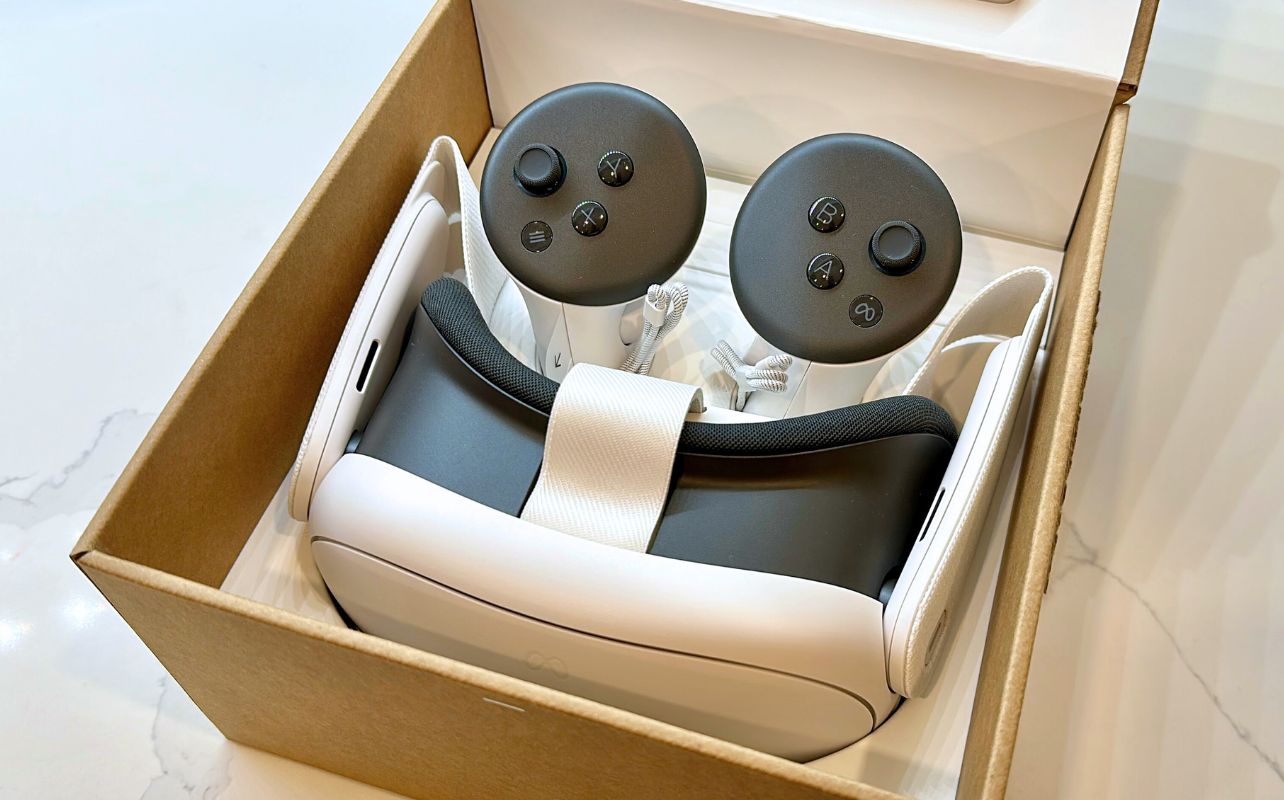
Accompanying each headset are two Meta Touch Plus controllers equipped with AA batteries. There is no difference between the controllers, and they are standard across the Meta VR ecosystem. Each package also has a USB-C charging cable and a compact power adapter to charge the headset and accessories. With each headset, a spacer is also included to accommodate users wearing eyeglasses, and elastic straps are pre-installed to secure the headset.
Rounding out the package is a quick start guide and safety information booklet, helping to simplify the setup process further. While the Quest 3’s hardware feels slightly more premium, the Quest 3S delivers all the essentials for a VR experience, making it easy to dive into VR right out of the box with both options.
Meta Quest 3 and Quest 3S headset design
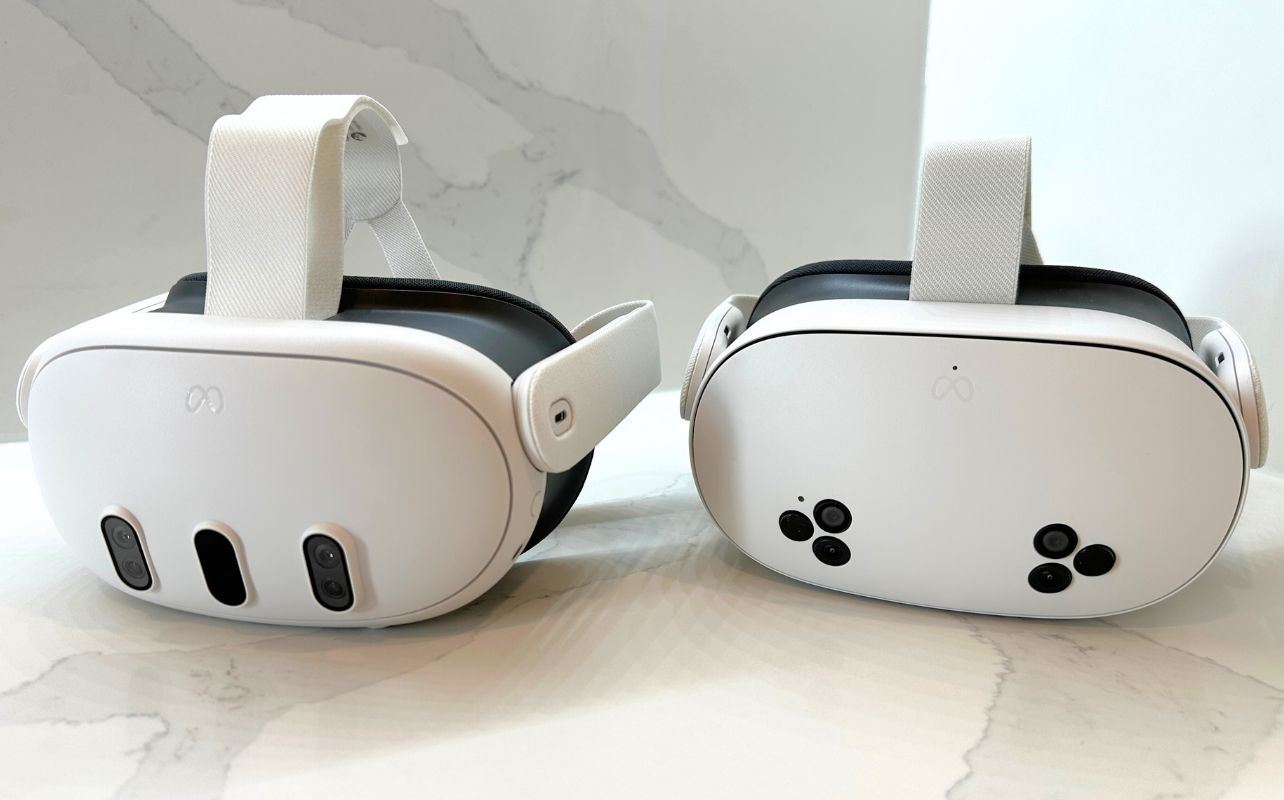
One of the first things I noticed about the Meta Quest 3 is its sleek design. The Quest 3 has a compact form factor with a more balanced weight distribution. This made extended gaming sessions much more comfortable, as the pressure on my face and head was much less pronounced. The Quest 3S is slightly bulkier and a little more “front heavy,” as it doesn’t hold the hardware’s weight closer to the user’s face and it protrudes more. Overall, I found the Quest 3 more comfortable to wear over long periods of time.
Meta Quest 3 vs Quest 3S lenses
The most significant difference between the two headsets comes from their lens types and quality. The Meta Quest 3 includes adjustable pancake lenses, providing extremely sharp visuals. It offers ultra-high resolution of 2064 x 2208 pixels per-eye. This helps increase text readability, image clarity, and the overall sharpness of environments within VR spaces. The Quest 3 also sports a depth sensor for enhanced automatic room mapping and offers more accurate mixed-reality experiences.
While still delivering solid visuals, the Meta Quest 3S has a slightly lower base resolution of approximately 2000 x 2200 pixels per eye—which is more than adequate for VR experiences. Designed with affordability in mind, the Quest 3S uses Fresnel lenses that come with some trade-offs compared to the lenses in the Quest 3. These Fresnel lenses are bulkier, contributing to a larger form factor. Additionally, they introduce more visual artifacts, such as edge blurring and a more pronounced screen-door effect, where the grid-like pattern of pixels becomes noticeable.
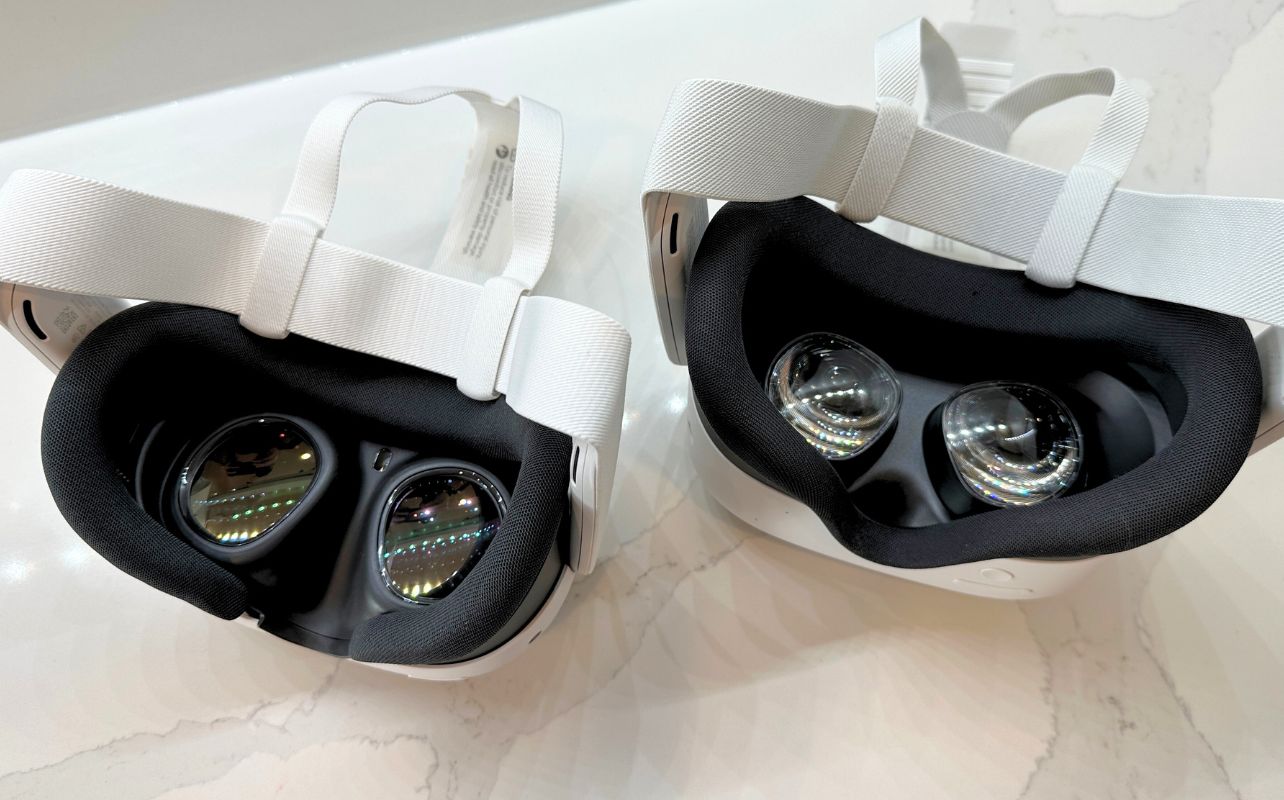
Performance and processing power
Under the hood, the Meta Quest 3 and 3S pack a powerful Qualcomm Snapdragon XR2 Gen 2 chipset. The silicon offers nearly double the performance over the Quest 2, offering a massive jump in performance. This translates to smoother gameplay, faster load times, and the ability to handle more graphically demanding games and apps. I noticed the user interface was very snappy, with quicker app launches, better game rendering, and improved multitasking performance.
Direct VR gaming comparison
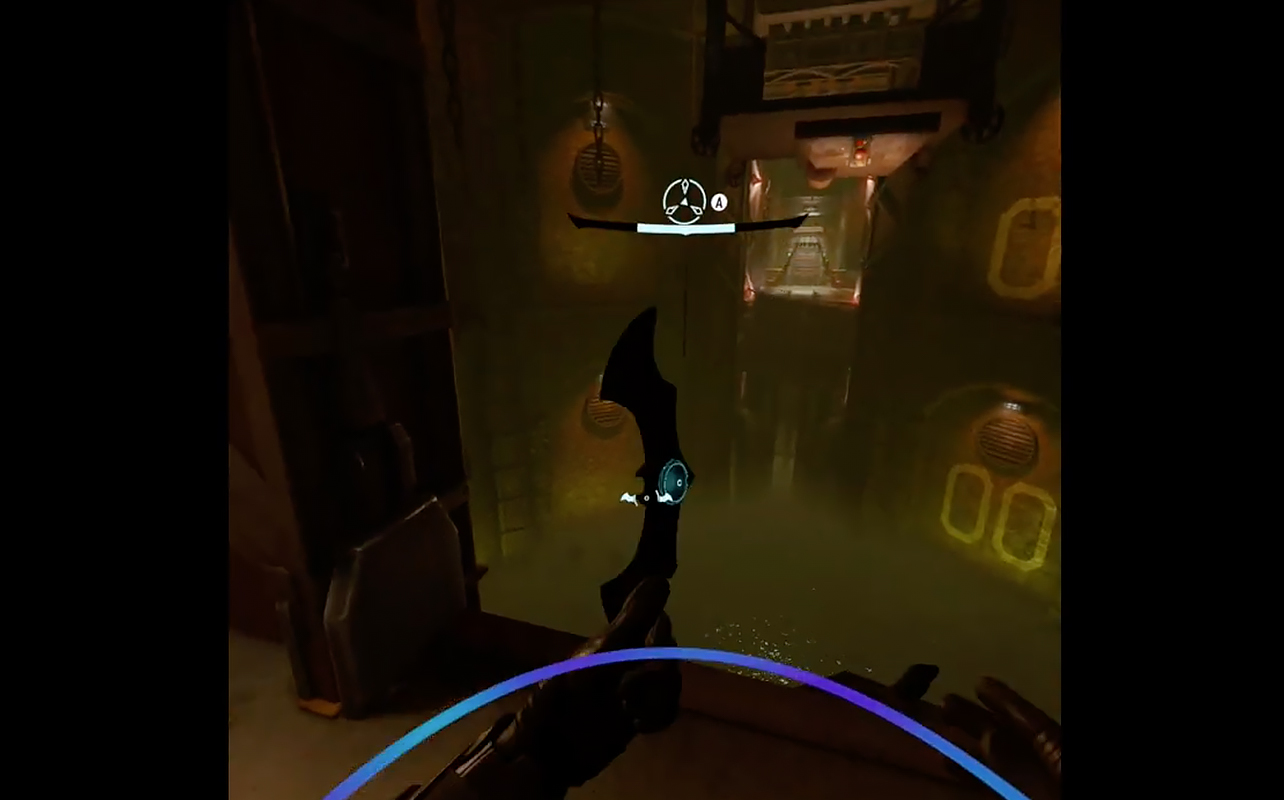
In a direct comparison while playing Batman: Arkham Shadows on both headsets, I noticed differences in visual clarity and immersion. The Meta Quest 3, with its higher-resolution display, offered sharper visuals and more vibrant colours, which made exploring Gotham’s dimly lit streets and detailed environments more immersive and lifelike.
On the other hand, the Meta Quest 3S, with its lower resolution, displayed a more noticeable screen-door effect and slight blurring at the edges of the image. While the gameplay performance remained smooth, the visual fidelity fell short of what the Quest 3 produced. This was especially true in highly detailed scenes, which slightly reduced the sense of immersion.
These differences are particularly evident in darker environments or when engaging with objects, where the Quest 3’s display and lens system excel. Both headsets use a fast-switch LCD panel, offering excellent contrast and vibrant colours. The refresh rate of 120Hz ensures a smooth and fluid experience during action-packed games or experiences. The LCD panel helps to reduce the screen-door effect on the Quest 3S, but it is still present during my testing with games. The Quest 3, however, remained incredibly sharp throughout all the different media I used on the device.
Meta Quest 3 offers great mixed-reality precision
The Meta Quest 3 offers exclusive access to certain high-performance applications and advanced mixed-reality features, made possible by its built-in depth sensor. This technology enhances the headset’s ability to transform your physical environment in real-time. For instance, it can seamlessly integrate virtual furniture into your room or enable realistic interactions with digital objects as if they were part of your real-world space. This functionality significantly elevates immersion in mixed-reality applications, allowing for a more dynamic and interactive experience.
Without a depth sensor on the Quest 3S, I found myself making more manual adjustments to the “safe” boundary around me. And I noticed that the smaller, more precise movements, like selecting buttons, weren’t tracked as accurately. Even with such limitations, the AR experience on the 3S was still great, though it was just much better on the Quest 3.
In addition to gaming, both headsets are fantastic for social interactions via Horizon Worlds—Meta’s social VR platform. You can meet friends, attend live concerts, or explore virtual environments, all within a highly immersive 3D space.
Quest 3 and 3S controllers and tracking
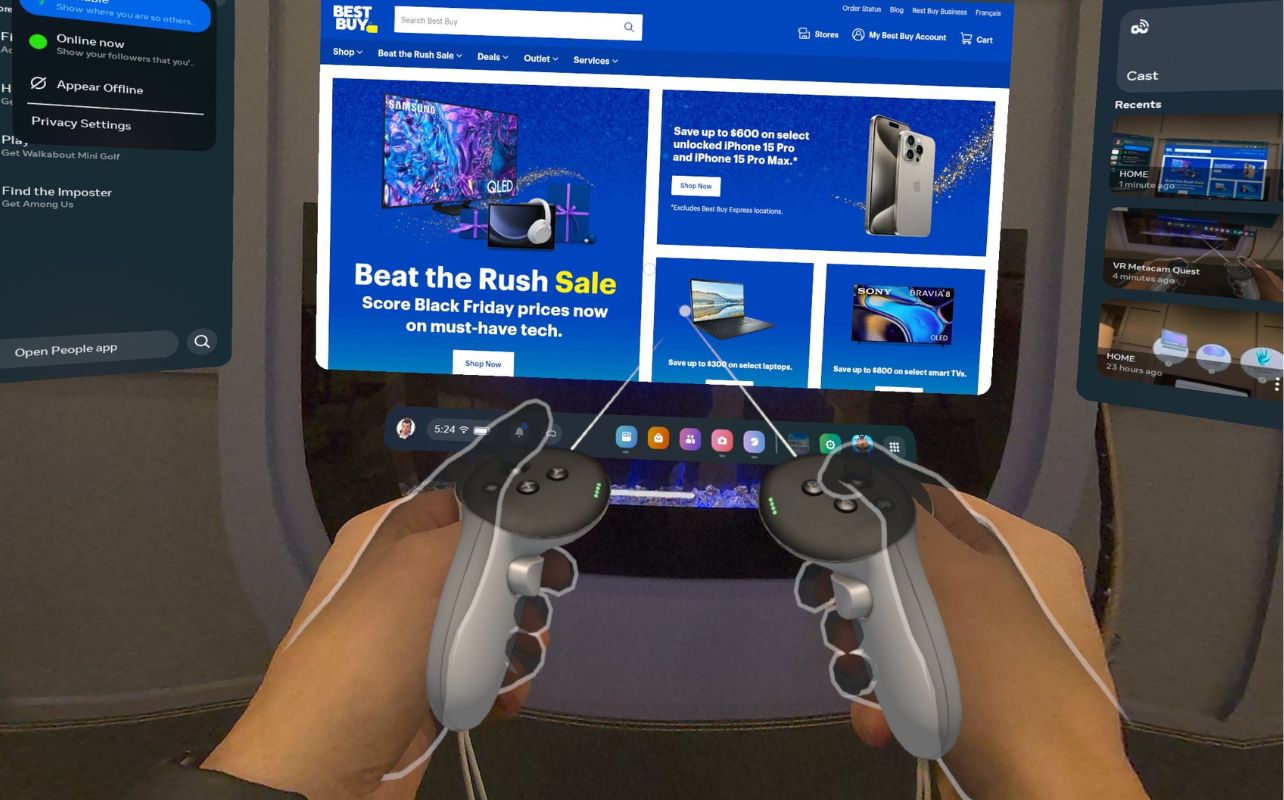
Whether you opt for the Meta Quest 3 or Quest 3S, they feature the same Touch Plus controllers and very similar tracking technology. Each set of controllers offers precision haptics, improved ergonomics, and inside-out tracking. I found both headsets could track my hand and controller movements with exceptional accuracy. The haptics also felt excellent, making virtual interactions more tactile and immersive. For example, typing on the virtual keyboard with the controllers felt great, with tactile response with each keystroke.
Meta’s Oculus platform and features
Both the Meta Quest 3 and 3S are powered by Meta’s Oculus platform, which in my opinion, remains the most user-friendly VR ecosystem out there. Another big plus of the Meta platform is the thousands of VR titles available. They range from exclusive titles like Asgard’s Wrath 2 to Assassin’s Creed Nexus, and Batman: Arkham Shadow, as well as apps for productivity, meditation, and fitness—there’s something for everyone.
Battery life
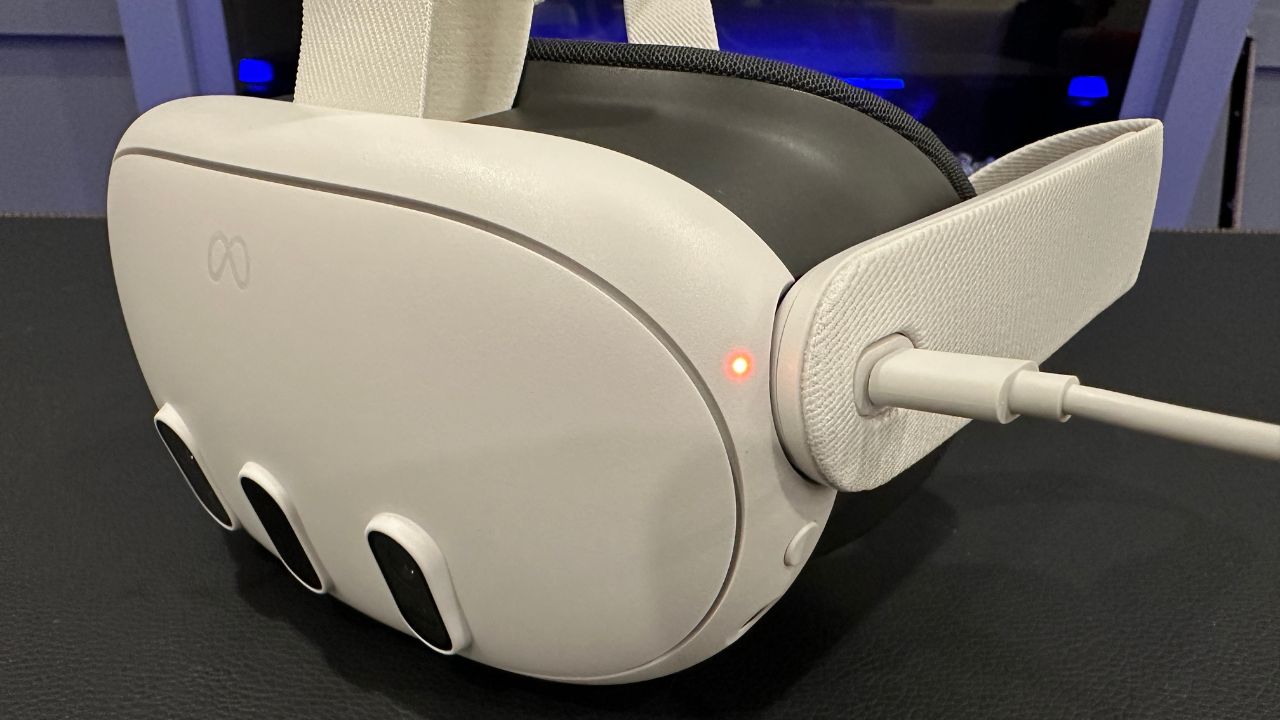
In terms of battery life, you can expect around 2–3 hours of use with the Meta Quest 3, depending on what you’re doing. More intensive games will naturally drain more power; many games, for example will bring the battery life down to two hours. Thankfully, you can charge and play, to deal with shorter battery life, but this does reduce your movement. The 3S has a slightly longer runtime, clocking in at 2.5 hours. Charging times are relatively quick, with the provided USB-C cable allowing for a full charge in about two hours.
Final thoughts on the Meta Quest 3 and Quest 3S
The Meta Quest 3 and Quest 3S represent a leap forward in the VR landscape. Both options offer great value depending on what you are looking for. The Quest 3 leads the charge as a high-performing premium device, and the 3S offers solid performance at a lower price point. Both headsets are incredibly user-friendly, powerful, and packed with innovative features. The choice between the two comes down to your priorities. If you want the best in mixed reality and gaming performance, the Quest 3 is the clear winner. However, if you’re starting out or want to save a bit of money, the Quest 3S would be a great choice for you.
Level up your VR setup on bestbuy.ca with the latest VR headsets, accessories and more.





